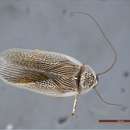en
names in breadcrumbs


Cockroaches are mostly nocturnal insect, with biting mouthparts and legs that are adapted for swift running.The body is oval and dorsoventrally flattened, allowing the animals to hide in narrow spaces, for example under bark or in crevices of trees and rocks. The head is usually hidden beneath the pronotal shield, and there is a pair of short cerci at the end of the abdomen. In winged species, the forewings (tegmina) are leathery and protect the delicate hindwings.
Most cockroaches are scavengers, with fairly broad diets, but a few species in the family Cryptocercidae specialize on dead and decaying wood. Some cockroaches invade human dwellings and are significant household pests.
Mantodea, Isoptera, and Blattaria are usually combined by entomologists into a higher group called Dictyoptera. Current evidence strongly suggests termites evolved directly from true cockroaches, and some authors now consider termites to be an epifamily of cockroaches (Eggleton et al. 2005), as the Blattaria excluding Isoptera are not a monophyletic group (Grimaldi & Engel 2005).
Blattodea contains over 4500 species worldwide, with about 150 species in Europe. They are among the most ancient winged insects, the earliest fossils dating back to the Carboniferous. The group is well defined by a combination of characters: eggs usually contained in oothecae (egg cases), leathery forewings, male genitalia asymmetrical and cerci* with one or more segments. Most cockroaches are tropical and found in a wide variety of habitats such as dead or decaying leaves or trees, caves, under stones, in nests of social insects etc. Cockroaches are mostly scavengers eating organic material. Less than 1% (30 species) are associated with humans, but these species contribute to the unpopular reputation of these insects. Cockroaches exhibit diverse reproductive biology. Most species have sexual reproduction, but some populations of Pycnoscelus surinamensis are parthenogenetic. These hemimetabolous insects produce hardened oothecae deposited on a substrate or membraneous oothecae that are incubated in a brood sac within the female’s body. Some species exhibit a high level of parental care.
*Cercus (sg.), Cerci (pl.): paired sensory structures at the posterior end of some arthropods.
Order Blattodea is also known as Order Blattaria.The species are commonly known as cockroaches.They usually range from two millimeters to over sixty millimeters in length, but some cockroaches have been measured at about 100 millimeters.Most species have two pairs of wings, but wingless species are known.They are quick and use this trait as a tactic to scurry away from predators.Sexual dimorphism can be seen in some species.They live in caves, forest canopies, and under bark.Almost all of the species are nocturnal.Cockroaches undergo incomplete metamorphosis.Pheromones are used to attract potential mates.The females usually produce an egg case called oothecae.Cockroaches can live for five to over forty days without water and food.If water is available they can survive for about 60 to 90 days without food.Though they can survive without resources for days, they have many natural enemies.Spiders, frogs, toads, centipedes, wasps, lizards, birds, geckos, mantids, ants, beetles, and mice feed on cockroaches.They can be seen in the fossil record as far back as the Upper Carboniferous.